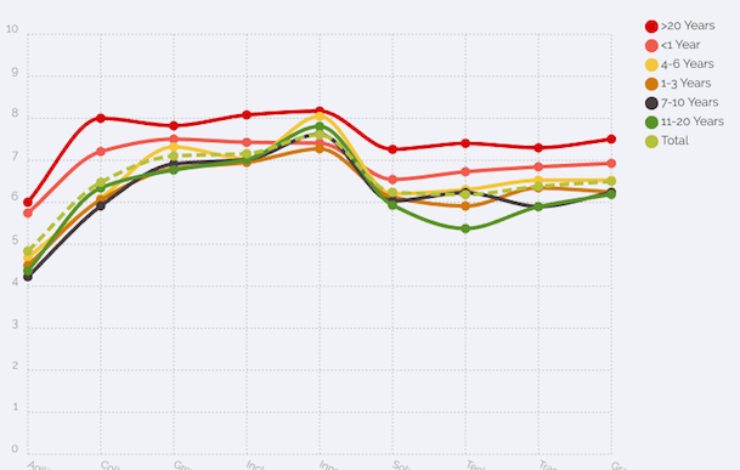What is Culture Analytics
In the context of our work, culture analytics is the science of using workplace culture data to generate meaningful actions that improve organizational results, and it is the heart of what we do at Human Workplaces. When we created the Workplace Genome, with Charlie Judy, based on the observation that what’s out there in the marketplace to help companies measure their culture—and DO something about it—is just not good enough. There are tons of data being generated, but not enough insight, and not enough action. Not the right kind, anyway.
We quickly realized that the insight/action gaps were tied directly to the data. What you choose to measure has a huge impact on the range of actions that will result. This is one of my main problems with employee engagement surveys. Once you measure (in excruciating detail) the ways in which your people are happy or not happy with 97 different aspects of your operation, then you are obligated to generate responses to those data. You are forced, essentially, to drop everything and try to increase the happiness scores. While this is laudable to some extent (nothing wrong with people being happy, generally speaking), it may not be what your organization needs. And because the data already point you to the solution, it becomes difficult to even figure out what your organization needs in the process.
Culture analytics should not give you the solution. They should give you the data you need to generate the solution. There is a huge difference.
We’ve written up a couple of different culture change case studies that demonstrate this principle well. In both case studies, the culture analytics data were pointing to some more traditional scores around the Culture Marker of transparency. What’s interesting is that the response in the two cases were actually in opposition—one moved quickly to share more information among the component parts of the organization, yet the other actually tried to LIMIT the amount of information being shared.
If you want to know why, then go here to download the case studies. But the point is that the conclusions, the insights, and the actions are still ultimately your responsibility, not the data’s.

